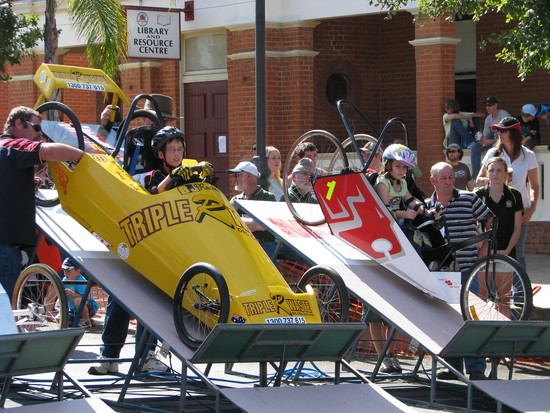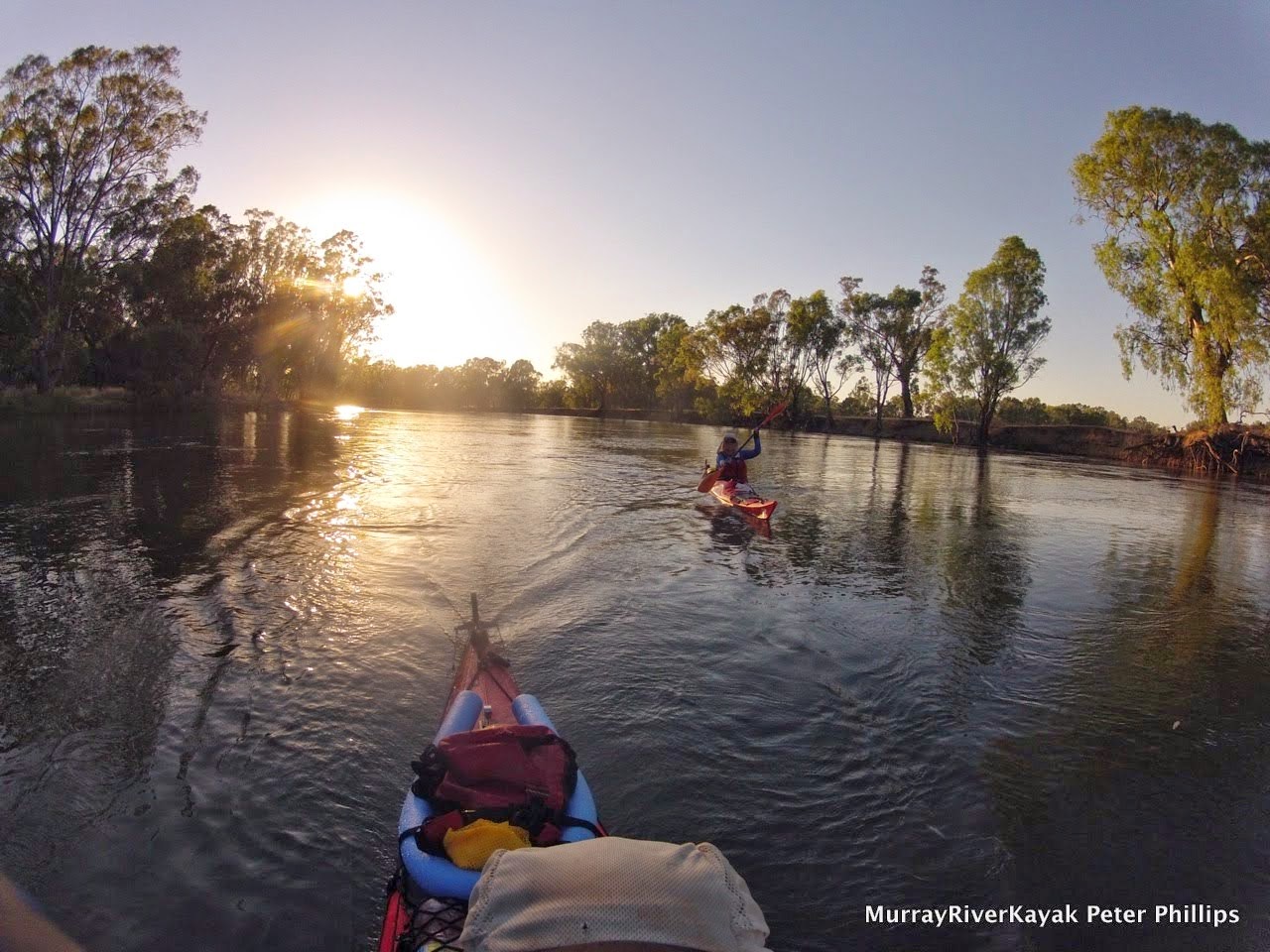Tomorrow we continue our paddle from the Hume to Echuca once more, after stopping to return home on news of the death of our beautiful little dog, Chloe. Because time is short, we will leave out the section from Corowa to Yarrawonga and do this another time.
This section is particularly beautiful, with winding river channels and flooded billabongs. It is also where the Ovens River enters the Murray. The weir at Yarrawonga causes the river to bank up artificially high and providing both natural and human communities with a steady river level as far upstream as Corowa.
It surprised us how much expensive development there was on the NSW bank near Corowa. It reminded me of Gol Gol, near Mildura, where there are many elaborate waterfronts. The whole thing is reminiscent of the French Riviera. Corowa is not as developed, or opulent, but the steady water level provided by the weirs at both locations gives people the confidence to develop. For the natural environment it means that there are permanent wetlands.
It surprised us how much expensive development there was on the NSW bank near Corowa. It reminded me of Gol Gol, near Mildura, where there are many elaborate waterfronts. The whole thing is reminiscent of the French Riviera. Corowa is not as developed, or opulent, but the steady water level provided by the weirs at both locations gives people the confidence to develop. For the natural environment it means that there are permanent wetlands.
 |
| Billabong wetland in a stand of remnant River Red Gum forest, lower Ovens River. another Youtube showing how meandering streams move and change. The lower reaches of the Ovens River offer some of the best still water canoeing in the state among a maze of channels and wetlands. With care, power boats can explore the river for several kilometres upstream from Camerons Bend. Parks Victoria: Cameron's Bend Lower Ovens River Environmental Flows Project |
Fishermen call it the Everglades of the Murray. Old river courses and flood plains of both the Murray and the Ovens rivers are full of life. I always wondered when driving along the Murray Valley Highway through Bundalong (a small town with a transient, or semi-permanent population of retired fishermen in caravans and holiday units) why people came: all the more so after a tornado almost destroyed the community last summer. Seeing the mosaic of habit in satellite photos I can understand. The attractions are rather on water than in the land - and I can't wait to spend a bit if time exploring there myself.
Bundalong was hit by a tornado in Mar 2013, which almost destroyed the town.
- Witnesses say tornado was like a bomb going off. ABC News.
- Tornado aftermath at Bundalong. Gallery. ABC News
- Clean up after 'devastating' tornado. The Age.
Lake Mulwala and the Yarrawonga Weir.
- When full, Lake Mulwala holds 1/4 as much water as Sydney Harbour.
- The primary role of Lake Mulwala is to store water for irrigation, its secondary role is flood mitigation. YarrawongaMulwala.com.
- The Mulwala Canal is 2,880 kilometres long and is the largest irrigation canal in the southern hemisphere. YarrawongaMulwala.com.
 |
| http://www.oasisholidays.com.au/ |
- A feature of Lake Mulwala is its dead gums. In 1937 the first suggestions were made concerning the clearing of the red gum forest, to create an open area in the lake. As the River Murray Commission refused to clear the trees, a group of local men took up axes and cross-cut saws, and in 1938 began the enormous task of felling the trees, at the cost of 10 shillings per acre. The River Murray Commission gave no financial assistance to the project, and were concerned that if the felled timber was not burnt or removed, it would prove a hazard to the weir. YarrawongaMulwala.com
- Hydroelectric generation, fishing, swimming and boating has been hampered by the growth of an aquatic weed (Egeria densa) in the past. The most effective way to control the weed has been to lower the level of the lake to dry out the weed. Lake Mulwala.
- Water storage levels and management documents. Murray Goulburn Water.
We will put in at the weir in Yarrawonga; the start of the Murray River Marathon. Over the years we have shared time, stories, memories and struggles in that race. For 40 years it was organised by Red Cross as a fundraiser for their world wide humanitarian deeds. Since 2009 the YMCA has used the event to fundraiser for local communities. Time has seen it develop from an adventure between mates to an international level competitive endurance event with strictly defined classes. Now it may be going back to its roots, with classes of ocean going boats challenging what racing boats should look like, schools and community groups entering relays and less formal rules for competition, encouraging completion rather than fastest times. In 2014 the event will be held for the first time in November, rather than between Christmas and New Year - a consequence of a tightening of state regulations and insurance conditions around times of high fire danger following the tragedies of a Black Saturday bush fires in the summer of 2009. In what some consider a knee jerk reaction, insurance companies refused to cover events that were held in isolated bush areas on Code Red Days, or days of Extreme Fire Danger. YMCA, covering insurance organisations and responsible government bodies became even more wary following the disastrous Kimberly Ultramarathon in 2011 where competitors were overrun by bushfire. An inquiry damned the organisers and competitors sued for $10 million. It has not been easy for the YMCA to find another time slot: river closures are not popular with local tourism industries. We wish them every success. One thing is for sure, we will not be able to avoid thinking about the marathon, it's many characters and the fantastic memories it has left us, as we paddle the home stretch into Echuca.















































